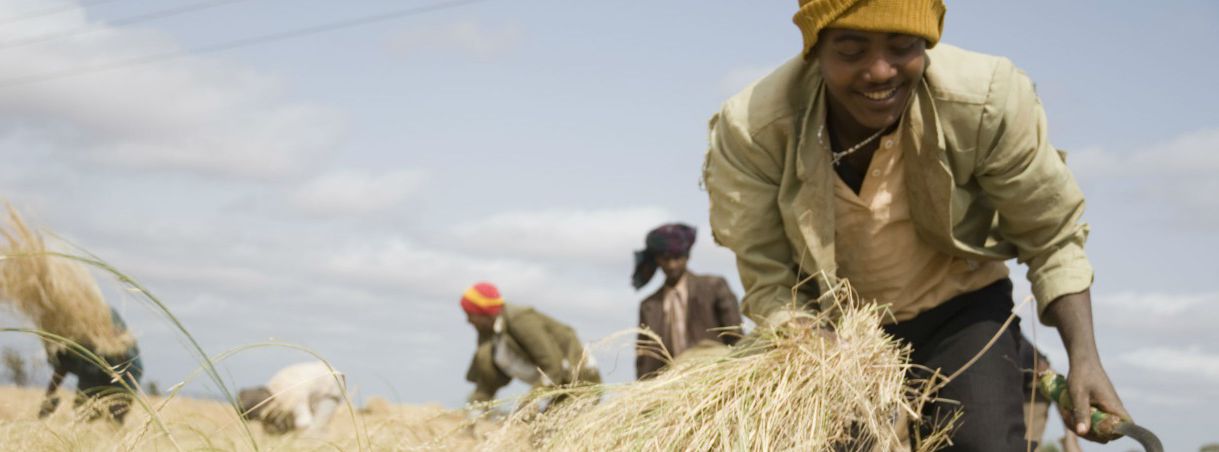As a learning partner on the IGNITE project (Impacting Gender and Nutrition through Innovative Technical Exchange in Agriculture), Laterite and lead technical partner Tanager conducted a study for the Sasakawa Africa Association (SAA) to understand the gender-specific drivers of household decision-making processes of teff farmers in Ethiopia.
In Ethiopia, women and men have distinct gender roles in teff farming. Women are involved at every stage of the teff farming process but often to lesser degrees than men. They’re less involved in plowing, pest management, and fertilizer application, and more involved in weeding, harvesting and teff storage. They also have additional responsibilities outside teff farming involving childcare, food preparation, or tending to livestock.
These norms have a direct influence on who decides to adopt a new agricultural practice. Through our study, we found that women are significantly less likely to view themselves as farmers and have less confidence in their farming abilities. There’s a common conception in Ethiopia that a woman’s role is indoors, in the domestic sphere. Women are less likely to attend trainings on agricultural best practice adoption because of this.
Decision-making on agricultural best practice adoption
Best practices are farming techniques that improve the production and harvest of agricultural products while enhancing factors such as soil fertility and yield. Decisions on the adoption of farming best practices are complex, and the final decision is either made solely by men, or jointly with women.
It’s uncommon for women to decide on best practice adoption on their own. Joint decisions are most common on weeding, post-harvest management, and selling teff. Since each best practice has a different decision-making process behind it, women are more involved in some decisions (weeding) and less involved in others (land preparation). Decisions over how teff income is spent however are primarily controlled by men, as they are the ones selling large quantities of teff following harvesting.
Gender-specific drivers of best practice adoption
Through our study, we identified numerous drivers to farming best practice adoption. Access to information, training attendance, and control over income are all associated with better household adoption. Having a female trainer, membership in community groups, more household members and wealth are also associated with this. By understanding these gender-specific drivers, SAA hopes to influence the decision-making process to increase best practice adoption and make its training program more gender-sensitive.
More information
This post is a short summary of Laterite and Tanager’s report on Gender-specific drivers of best practice adoption among teff farmers in Ethiopia. You can read the full report here. We also compiled the full list of publications on our work for the IGNITE project.
Photo credit: Esayas Ayele, 2017 (Wikicommons)
